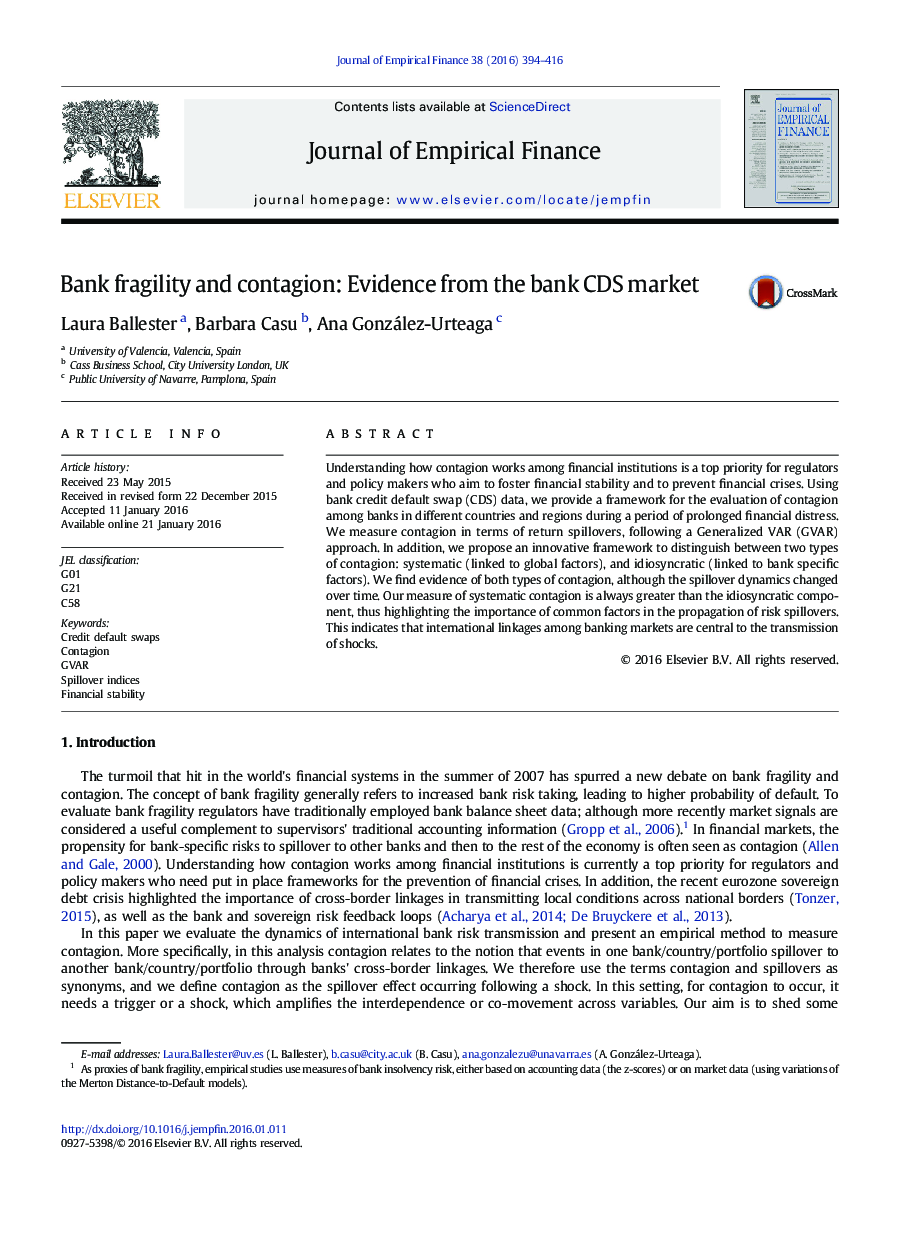| Article ID | Journal | Published Year | Pages | File Type |
|---|---|---|---|---|
| 6481224 | Journal of Empirical Finance | 2016 | 23 Pages |
â¢We provide a novel framework for the evaluation of contagion in different countries and regions during a period of prolonged financial distress.â¢We combine PCA and a GVAR framework to distinguish between systematic and idiosyncratic contagion.â¢We provide evidence of the time variation of the transmission of credit risk among bank CDS portfolios.â¢We find evidence of both types of contagion, although the spillover dynamics changed over time.â¢Systematic contagion is greater than idiosyncratic contagion, pointing to the role of international linkages in the transmission of shocks.
Understanding how contagion works among financial institutions is a top priority for regulators and policy makers who aim to foster financial stability and to prevent financial crises. Using bank credit default swap (CDS) data, we provide a framework for the evaluation of contagion among banks in different countries and regions during a period of prolonged financial distress. We measure contagion in terms of return spillovers, following a Generalized VAR (GVAR) approach. In addition, we propose an innovative framework to distinguish between two types of contagion: systematic (linked to global factors), and idiosyncratic (linked to bank specific factors). We find evidence of both types of contagion, although the spillover dynamics changed over time. Our measure of systematic contagion is always greater than the idiosyncratic component, thus highlighting the importance of common factors in the propagation of risk spillovers. This indicates that international linkages among banking markets are central to the transmission of shocks.
